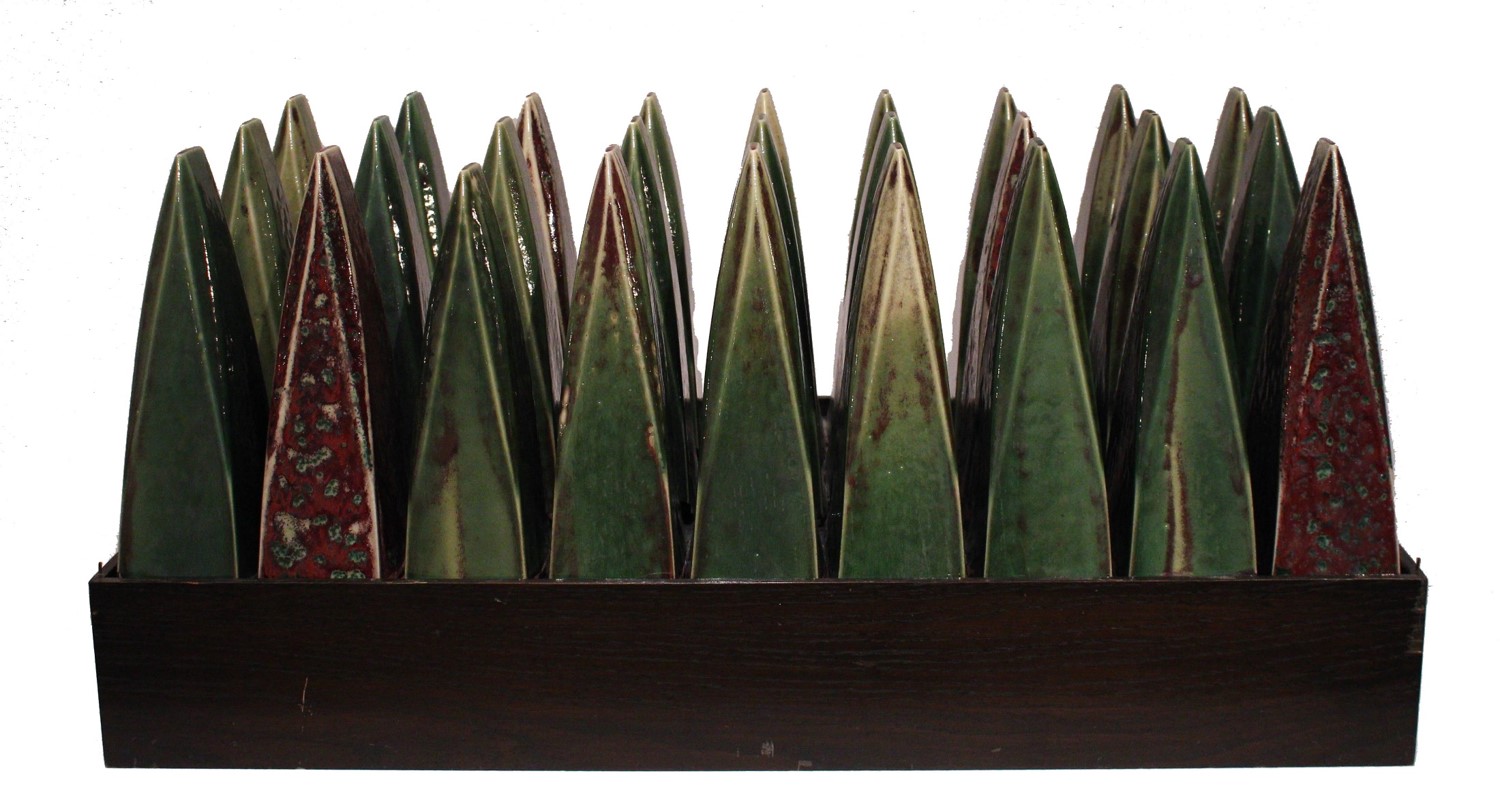David Benge (1936-2002) was an American ceramic artist from Los Angeles, California. He began his career in ceramics in 1965, training under fellow artists Carlton Ball and Susan Peterson, and then worked as a potter in Santa Fe, New Mexico for ten years. While in Santa Fe, Benge frequently exhibited his work, participating in exhibitions that focused on ceramics. Benge later returned to California and worked in research and development for various Los Angeles-based ceramic factories. In 1990, Benge returned to his artistic practice full-time with a reinvigorated focus on the metaphysical and symbolic. His later work largely consists of slip-cast stoneware, fired in an electric kiln, and colored with stains or simple glazes. Benge often created his sculptures in many different pieces, which he then assembled with epoxy. He incorporated symbols, such as the Egyptian winged scarab or the globe, to reflect the eclectic and personal experiences of those viewing his work. Benge saw the process of art making as a challenge, one that forced him to evolve and grow as an artist. Keeping in mind his ultimate goal, to present his audience with an object of beauty, Benge focused on making his work creative, fun, and interesting for any viewer.[1] Benge created Magician’s Case during the early period of his ceramic career. The sculpture is comprised of twenty-seven green and brown cone-shaped objects that emerge vertically from a wooden box. Set in neat rows, the shapes appear tree-like, but perhaps they refer to a bed of nails, a popular magician’s stunt where the performer appears to walk across a carpet of nails arranged with their points facing up. The neat rows convey a sense of uniformity, but upon closer inspection, each individual form is unique due to variations in its color, shape, and texture. Benge’s Magician’s Case was first exhibited at the Everson in 1968 during the 25th Ceramic National Exhibition, where it received the Purchase Prize given by the Syracuse Society of Architects. It is currently on view in The Very Mirror of Life: Ceramics at the Everson 1968-2018, through December 30, 2018.
-Maggie Teschler, Curatorial Intern


